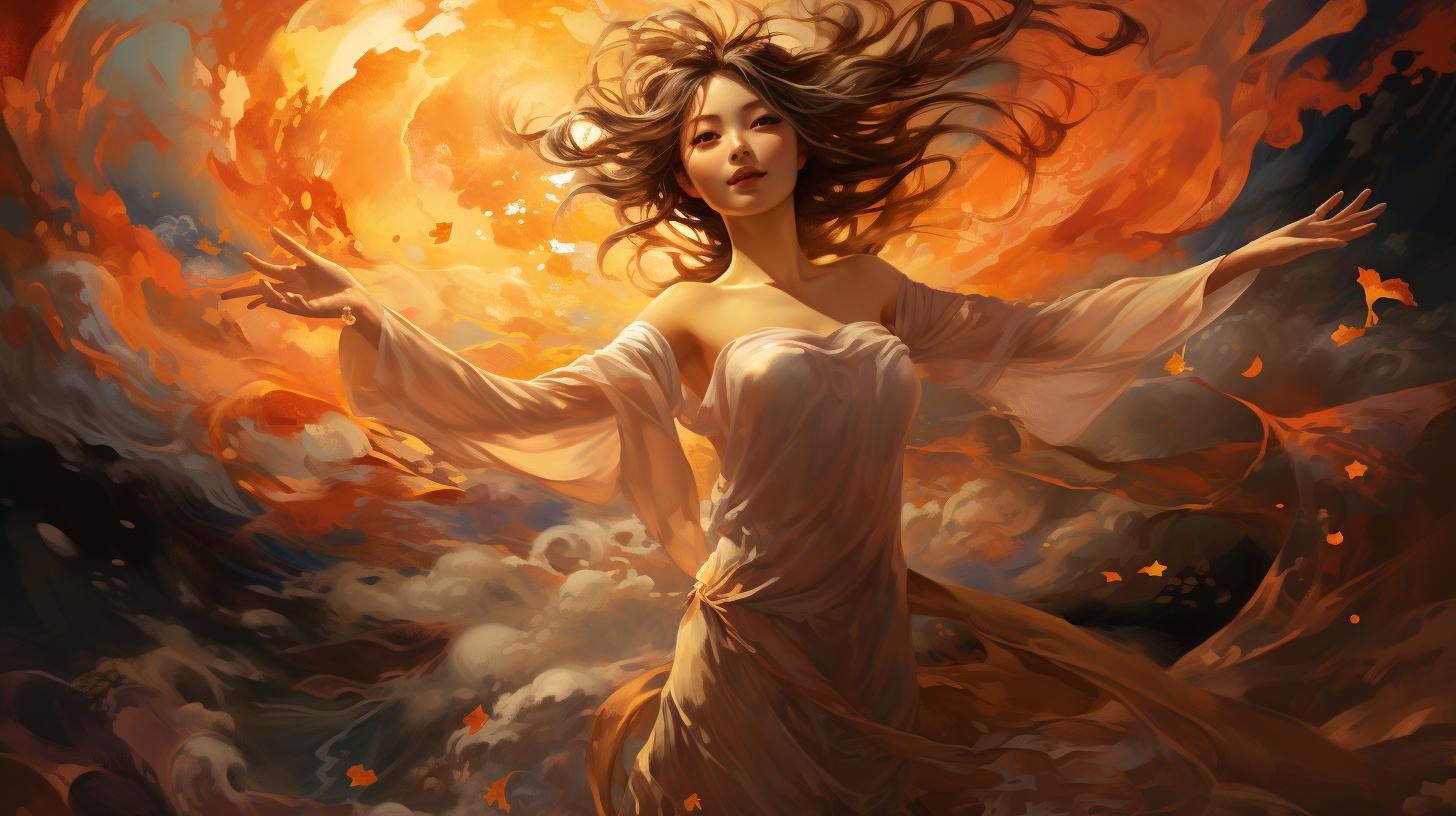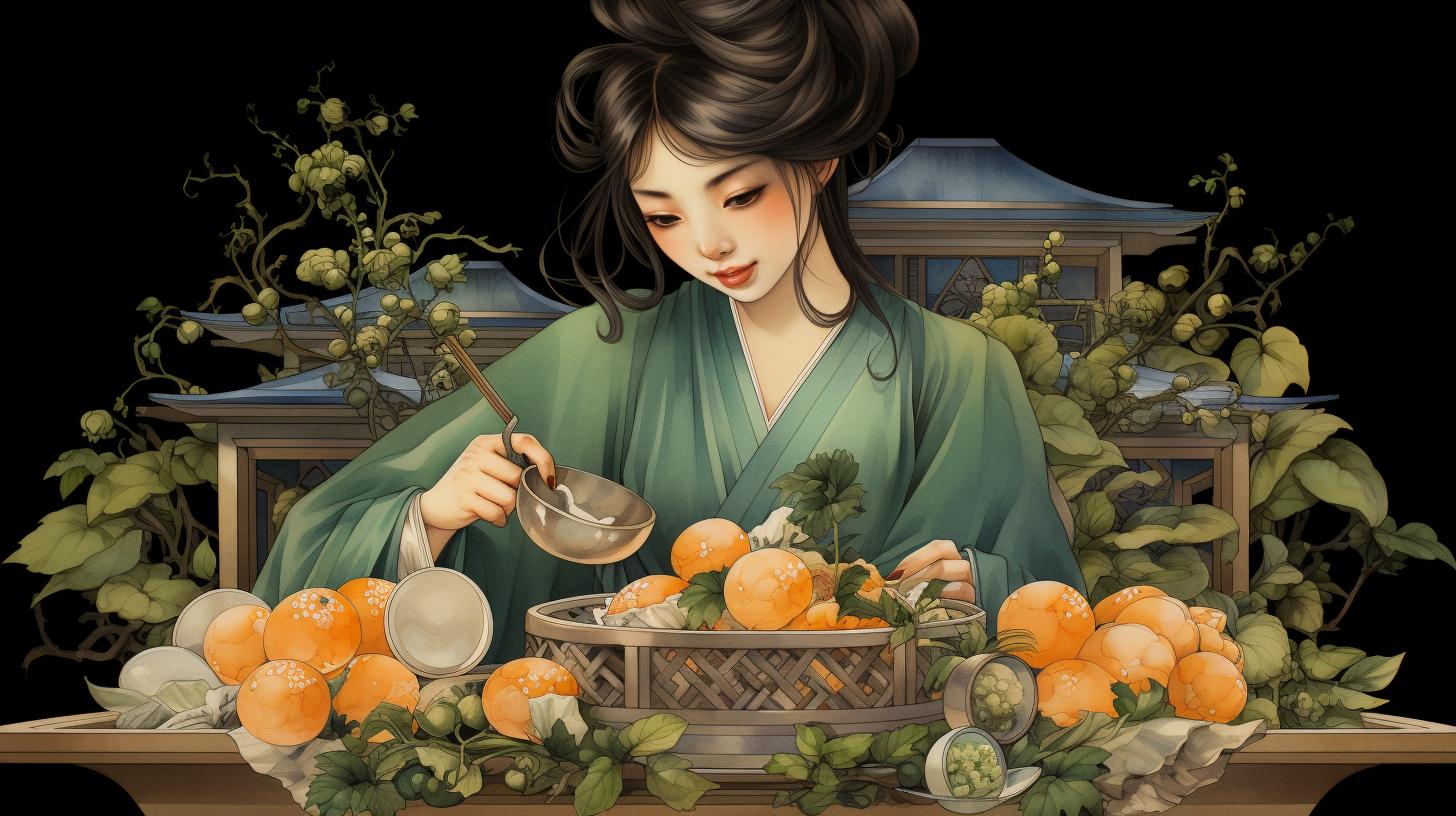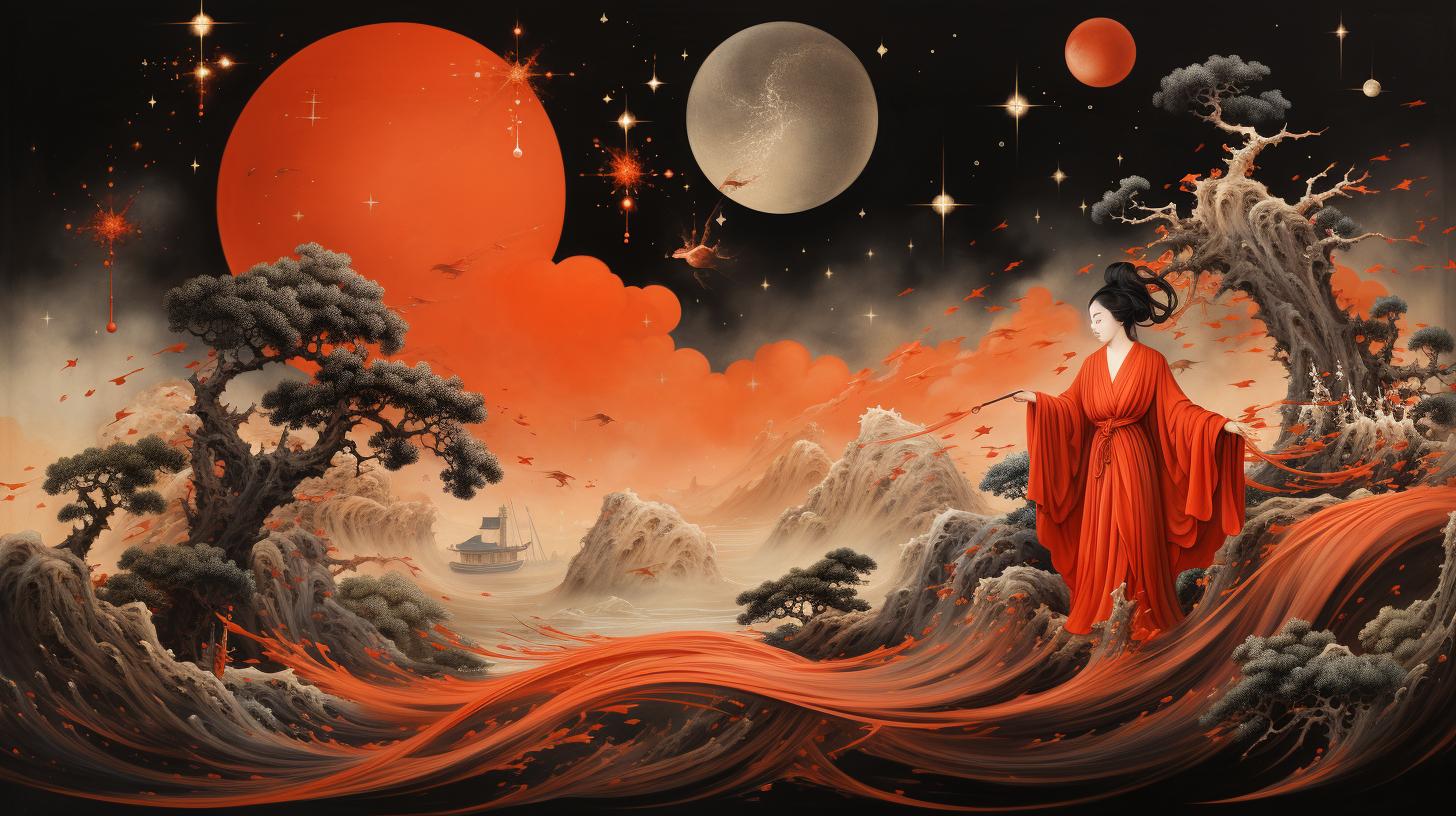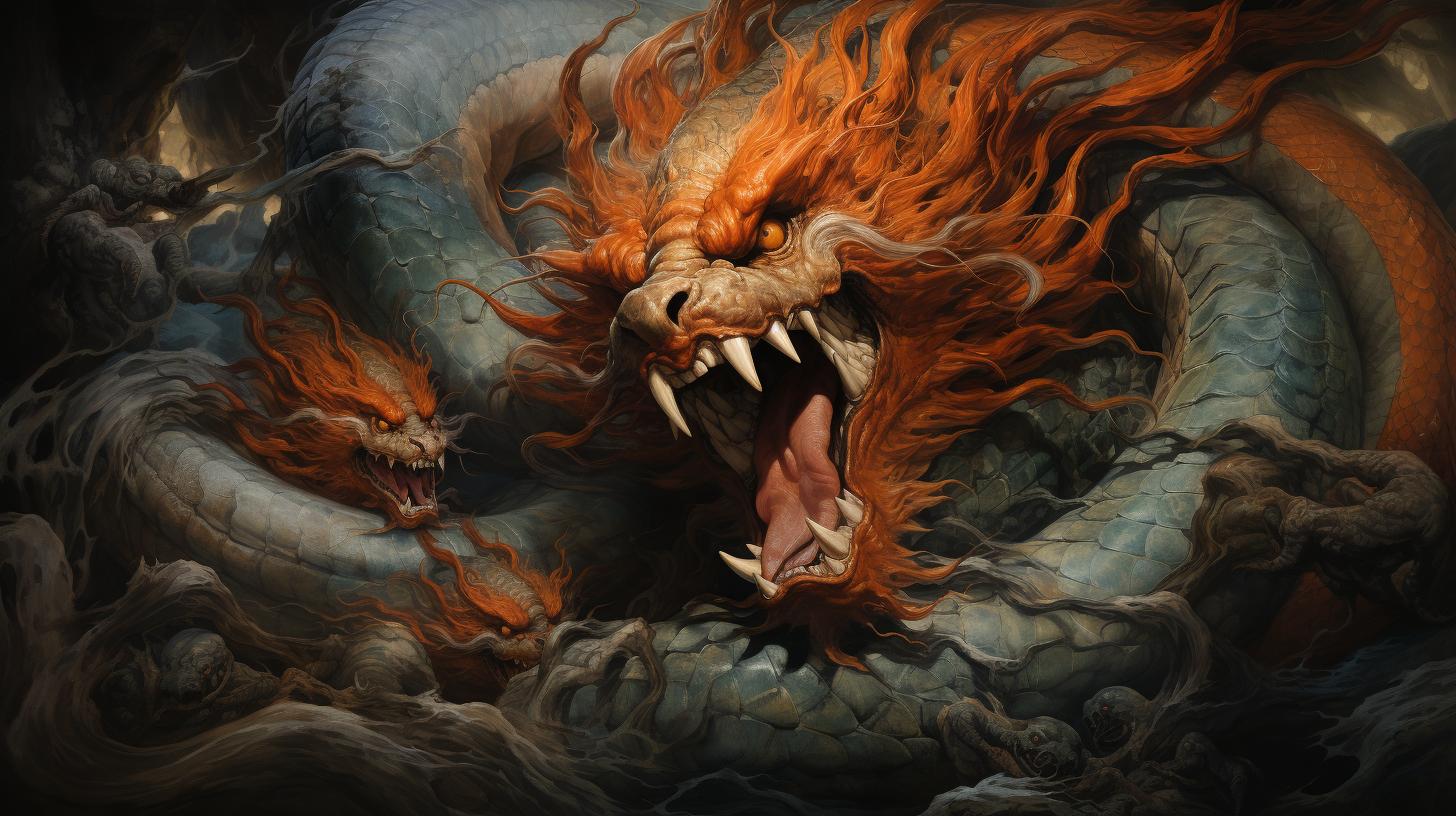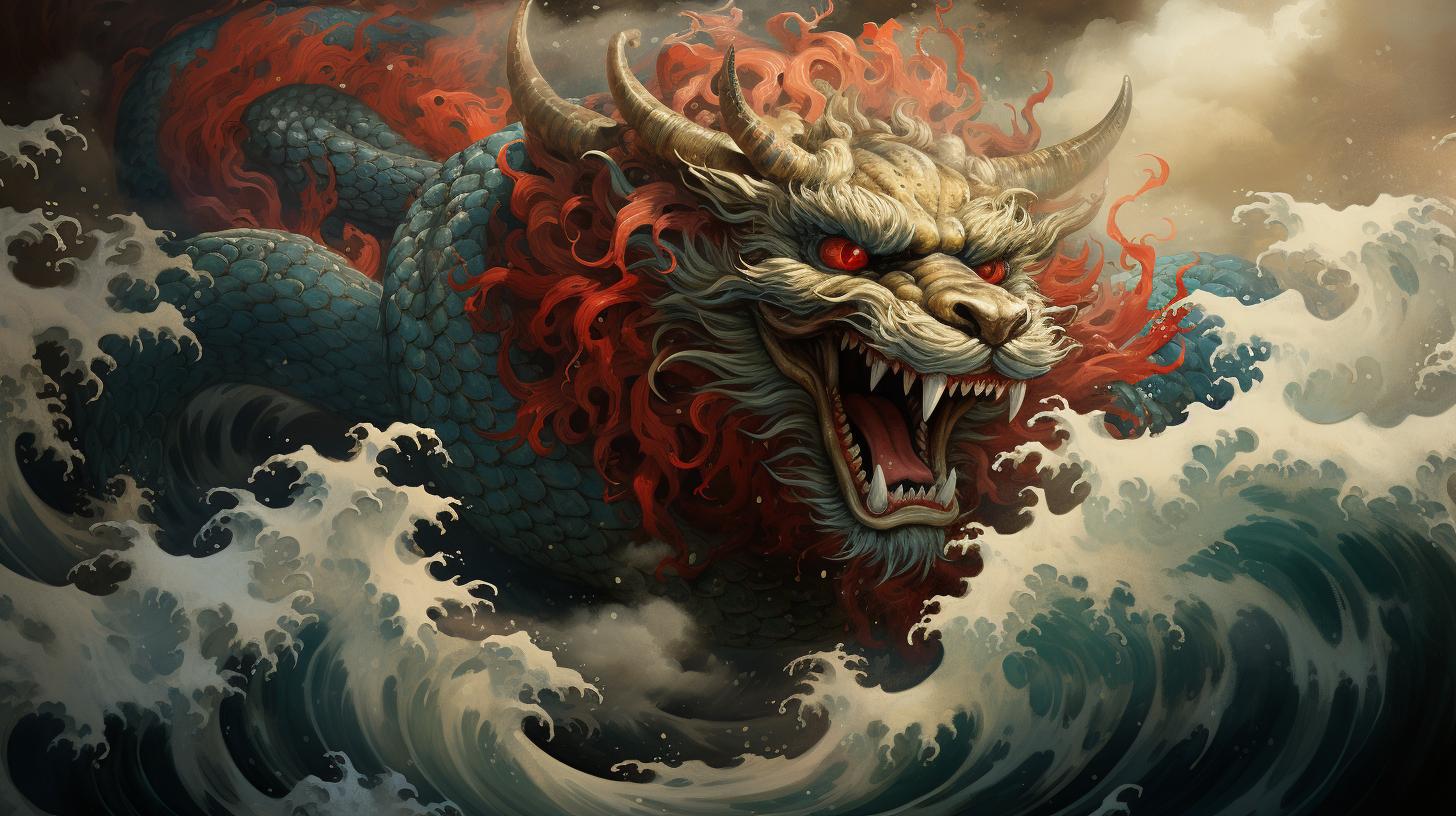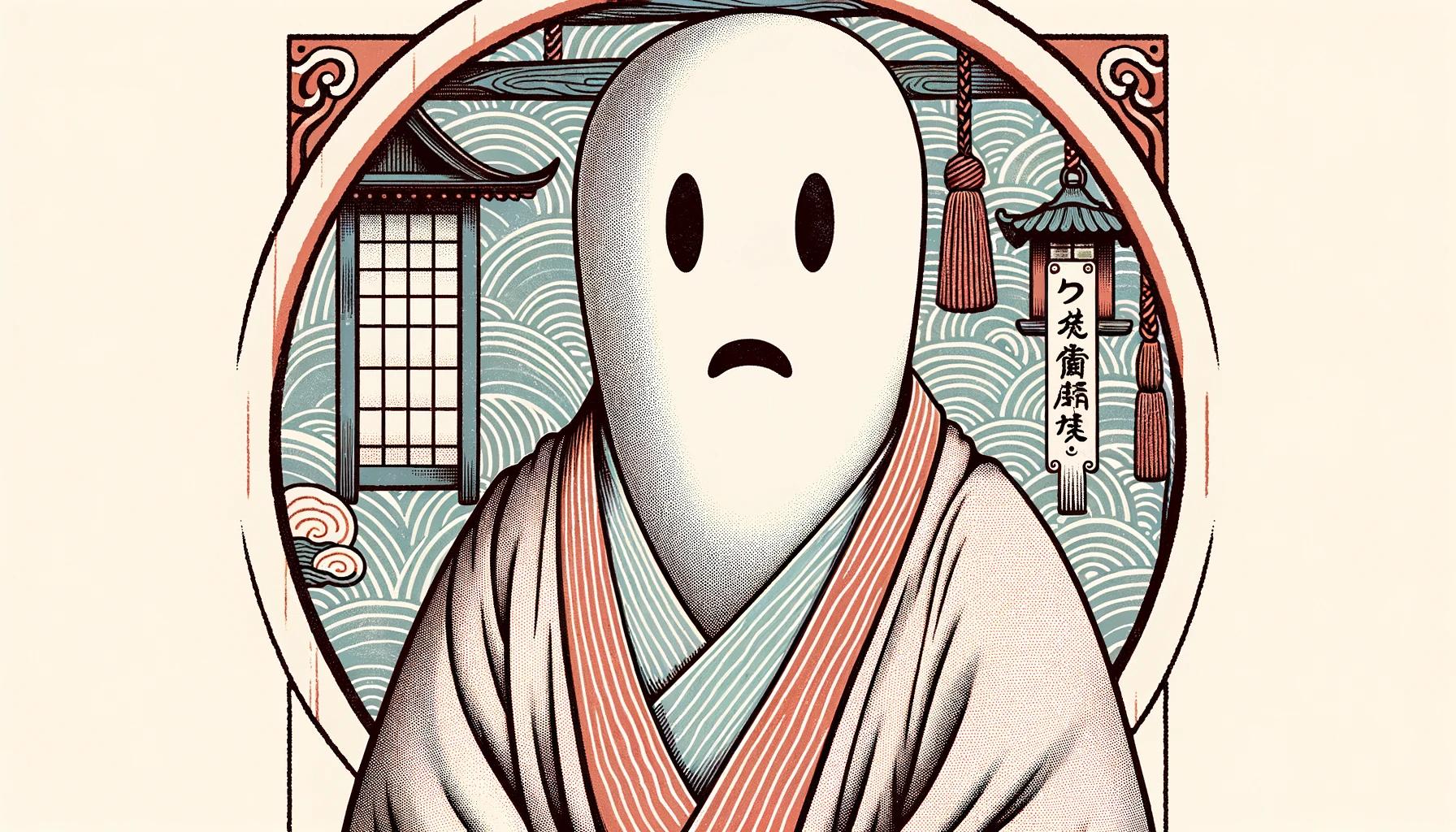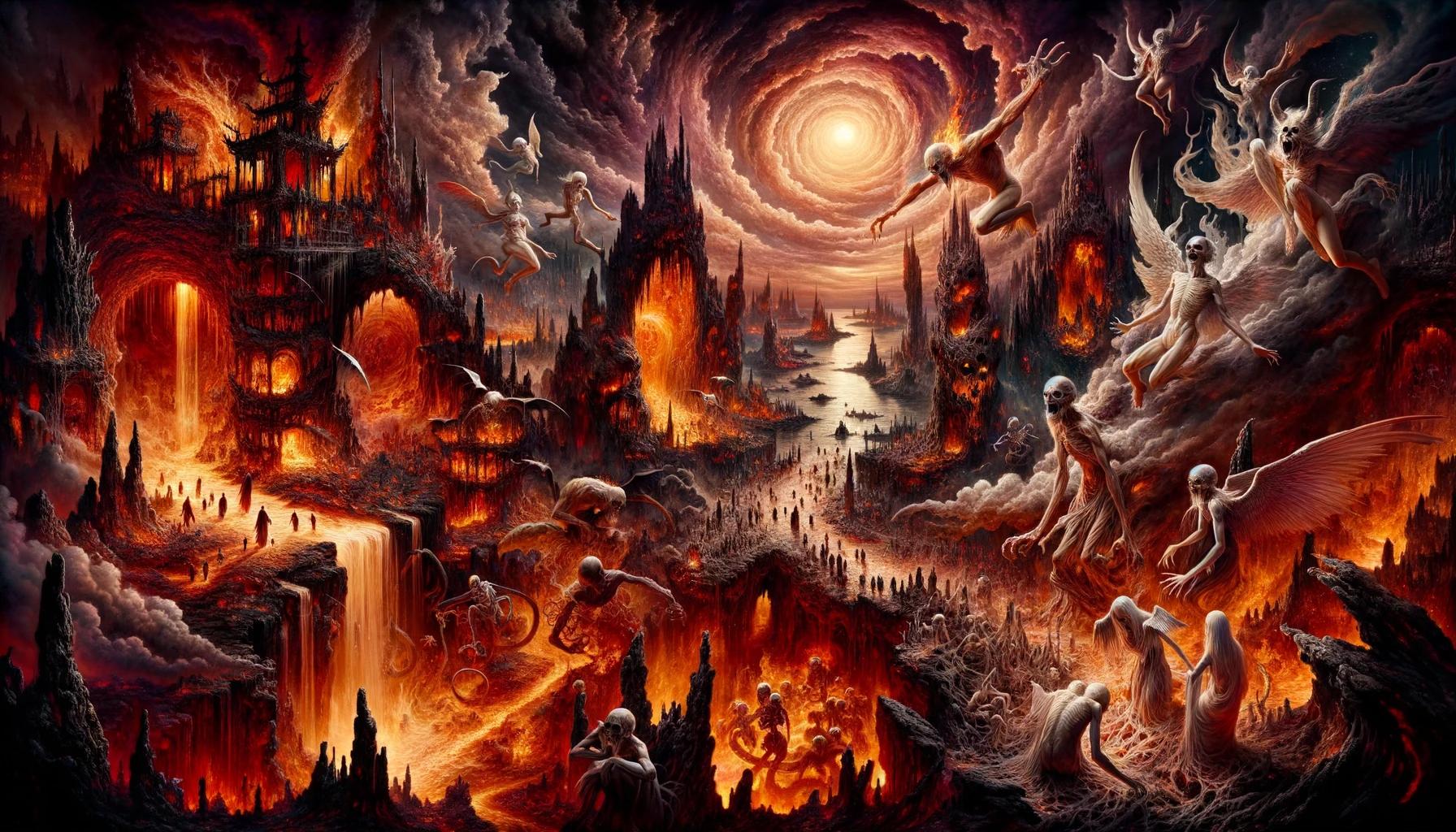Ame no Uzume Goddess: The Enchanting Shinto Deity of Light, Dance, and Laughter
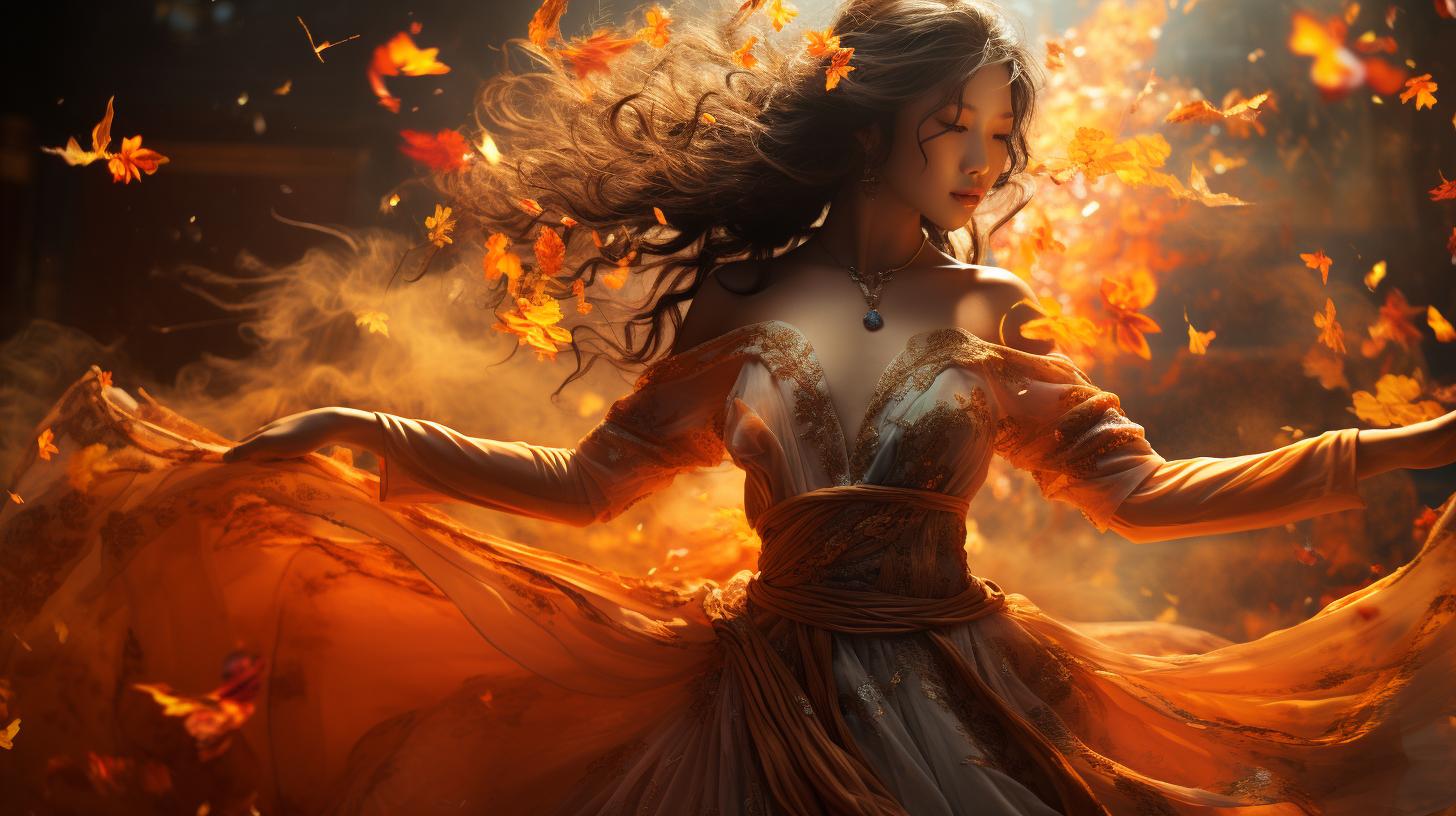
Ame-no-Uzume, the Shinto goddess of dawn, dance, and humor, holds a significant role in Japanese mythology. Known for bringing light to the world by coaxing the goddess Amaterasu out of a dark cave, she embodies joy and creativity.
In Shinto religion, Ame-no-Uzume is revered through music and dance in ceremonies, and numerous shrines are dedicated to her. Her influence extends to Japanese culture, particularly in the realms of dance, theater, and folklore.
Additionally, she finds representation in popular media, like video games and anime. Let’s explore the intriguing facets of Ame-no-Uzume’s mythology and her lasting impact.
Overview of Ame no Uzume Goddess
Ame no Uzume is a captivating and revered figure in Japanese mythology, embodying the essence of light, dance, and laughter. As a Shinto goddess, her influence extends beyond the realm of folklore, leaving a lasting impact on various aspects of Japanese culture and religious practices.
Known for her pivotal role in bringing light back to the world, Ame no Uzume’s story revolves around her efforts to coax the goddess Amaterasu out of a dark cave.
With her cheerful and open-hearted nature, she succeeded in restoring brightness and joy to the universe.
Ame no Uzume’s attributes and associated deities further enrich her divine persona. Her husband, Sarutahiko Okami, leads the earthly kami and together they fostered the creation of the renowned noh and kagura theaters.
These theatrical art forms, deeply rooted in Japanese traditions, showcase her enduring influence on the performing arts.
The admiration for Ame no Uzume endures in present-day Shinto religion, where she continues to be revered and honored.
Music and dance play a significant role in Shinto ceremonies, with the celebrated kagura dance often embodying her spirit. Additionally, numerous shrines dedicated to Ame no Uzume can be found throughout Japan, serving as sacred spaces for worship and contemplation.
Ame no Uzume’s presence extends beyond religious and cultural realms. She has found her way into popular media, particularly within the realms of video games and anime. The enchanting character she embodies is frequently portrayed, creating connections between ancient mythology and contemporary entertainment.
The Role of Ame no Uzume in Japanese Mythology
Ame no Uzume holds a significant role in Japanese mythology, embodying various aspects and contributing to the development of the divine narrative. As a vibrant and influential figure, she played a crucial part in bringing light and joy to the world.
Let’s explore two key aspects of her mythology: bringing light to the world and her attributes and associated deities.
Bringing Light to the World: Ame no Uzume and Amaterasu
One of the most renowned tales involving Ame no Uzume is her role in coaxing the goddess Amaterasu, the celestial sun deity, out of a dark cave. Legend has it that Amaterasu, disheartened by her brother’s reckless behavior, secluded herself in a cave, casting the world into darkness and despair.
Seeking to restore light and balance, the other gods called upon Ame no Uzume.
Ame no Uzume approached the cave and, with her cheerful and open-hearted nature, devised a plan to entice Amaterasu out of hiding.
She began an enchanting dance, accompanied by laughter and merriment, which attracted the curiosity of the sun goddess. Intrigued by the commotion, Amaterasu emerged from the cave, restoring light and vitality to the world.
Ame no Uzume’s Attributes and Associated Deities
Beyond her role in bringing light, Ame no Uzume possesses various attributes and is associated with other deities in Japanese mythology. Known for her joyful and lighthearted demeanor, she represents the aspects of humor, dance, and artistic expression.
Ame no Uzume’s influence extends to the creation of different art forms in Japan, such as the kagura dance and the noh theater.
Additionally, Ame no Uzume is connected to the kitsune, the cunning and magical fox spirits in Japanese folklore.
These mischievous creatures are often associated with her, highlighting her multifaceted nature as a deity. Moreover, Ame no Uzume’s husband is Sarutahiko Okami, the leader of the earthly kami, further emphasizing her importance within the divine hierarchy.
By understanding the pivotal role Ame no Uzume played in bringing light to the world and her attributes and associations with other deities, we gain insight into the rich mythological tapestry of Japanese culture.
Ame no Uzume Goddess in Shinto Religion
Ame no Uzume, the vibrant deity of dance and joy, holds a significant position within the Shinto religion. Her role in mythological tales has translated into her importance in Shinto ceremonies and the devotion of her followers.
Let’s delve into the captivating world of Ame no Uzume in the context of Shinto religion.
Shinto Ceremonies and Ame no Uzume
Shinto ceremonies, rich in tradition and spirituality, often include rituals dedicated to honoring Ame no Uzume. Participants engage in music, dance, and theatrical performances to invoke her playful spirit. The lively atmosphere created during these ceremonies seeks to embody the essence of Ame no Uzume’s joy and artistic expression.
Through music and dance, participants celebrate Ame no Uzume’s role in bringing light to the world and view her as a patroness of creativity. The kagura dance, specifically associated with her, is commonly performed to pay homage to her influence in Japanese art forms.
Shrines Dedicated to Ame no Uzume
Throughout Japan, numerous shrines have been erected in honor of Ame no Uzume. These sacred places serve as spaces for devotees to pay their respects and seek blessings from the goddess.
Here, visitors can partake in rituals and leave offerings, expressing their gratitude and seeking her divine guidance.
Shrine architecture often reflects the spirited nature of Ame no Uzume, incorporating vibrant colors and intricate designs.
The presence of these shrines reinforces the ongoing reverence and significance of Ame no Uzume within the religious landscape of Shintoism.
Among the notable shrines dedicated to Ame no Uzume are the Ama-no-Uzume Shrine in Kyoto and Suwa Shrine in Nagano.
Pilgrimages to these sites continue to be a cherished practice for those seeking a deeper connection to the deity and her influence on Japanese culture.
Ame no Uzume Goddess in Japanese Culture and Art
Ame no Uzume, the vibrant Shinto goddess of dawn and dance, holds significant influence in Japanese culture and artistic expressions.
Her captivating presence is felt in various art forms, particularly in dance and theater.
Ame no Uzume’s Influence on Dance and Theater
Within the realm of Japanese performing arts, Ame no Uzume’s influence is undeniably profound. She is credited with the creation of the kagura dance, a sacred ceremonial dance dedicated to the gods.
This spirited and rhythmic dance form often embodies joy, celebrating the beauty of life and nature.
Furthermore, Ame no Uzume’s impact extends to the iconic noh theater. This traditional form of Japanese theater, characterized by its stylized movements and refined expressions, can be traced back to the efforts of Ame no Uzume’s children.
Their creativity gave birth to the art form, which intertwines music, dance, and storytelling in mesmerizing performances that delve into profound themes and emotions.
Ame no Uzume and Kitsune: The Cunning Fox Spirits
Ame no Uzume’s connection to Japanese folklore becomes particularly intriguing when considering her association with the cunning fox spirits known as kitsune.
These mischievous and shapeshifting creatures are often depicted as embodiments of Ame no Uzume’s playful and clever nature.
The legend tells that Ame no Uzume herself transformed into a fox as part of her dance to coax Amaterasu out of the cave, highlighting the intertwined relationship between the goddess and these wily beings.
The kitsune’s mischief and intelligence are mirrored in Ame no Uzume’s joyful and mischievous demeanor, further enhancing her vibrant character.
- Ame no Uzume’s influence on dance and theater:
- Creation of the kagura dance
- Connection with the noh theater
- Ame no Uzume and Kitsune:
- Association with the cunning fox spirits
- Transformation into a fox during the coaxing of Amaterasu
Ame no Uzume in Popular Media and Contemporary References
In addition to her significance in mythology and religious ceremonies, Ame no Uzume goddess has made her presence known in popular media and contemporary cultural expressions.
She has become a beloved character in video games, anime, and various visual and literary works, showcasing her enduring popularity and appeal.
Ame no Uzume in Video Games and Anime
Within the realm of video games, Ame no Uzume has been featured in the highly acclaimed Megami Tensei series, captivating players with her enchanting charm and supernatural abilities. Players have the opportunity to interact with her character, experiencing firsthand her role as a powerful deity associated with humor, dance, and the arts.
Similarly, in the world of anime, Ame no Uzume’s vibrant persona has captured the hearts of viewers. She is portrayed as a lively and dynamic goddess, often depicted in beautifully animated scenes showcasing her connection to dance and theatrical performances.
Ame no Uzume’s Representation in Visual and Literary Works
Artists and authors have found inspiration in Ame no Uzume’s captivating mythology, incorporating her into their visual and literary creations. Through stunning artwork and captivating storytelling, Ame no Uzume is depicted in various forms, highlighting her joyous and mischievous nature.
Literature enthusiasts can explore tales that reimagine Ame no Uzume’s role in bringing light to the world, offering unique perspectives on her character and contributions. Visual representations in paintings, illustrations, and sculptures showcase her lively nature, often depicted in vibrant colors and dynamic poses that embody her connection to dance and laughter.
Overall, Ame no Uzume’s presence in popular media and contemporary references is a testament to her enduring influence and fascination. Whether through video games, anime, or artistic creations, her character continues to captivate audiences, celebrating her role as a symbol of joy and creativity in Japanese culture.
Frequently Asked Questions about Ame no Uzume Goddess
Discover answers to common questions about Ame no Uzume, the captivating deity of Japanese mythology.
Who is Ame no Uzume and what is her significance in Japanese mythology?
Ame no Uzume is a revered figure in Japanese mythology, known as the goddess of dawn, dance, and humor. Her significance lies in the pivotal role she played in bringing light back to the world by luring the goddess Amaterasu out of a dark cave.
Ame no Uzume’s joyful and creative nature represents the power of laughter and artistic expression.
How is Ame no Uzume worshipped in Shinto ceremonies?
In Shinto ceremonies, Ame no Uzume is worshipped through music, dance, and theatrical performances. The kagura dance, often associated with her, is performed to honor her and invoke her blessings. Participants dress in vibrant attire, reflecting the lively spirit of Ame no Uzume, and engage in energetic movements to celebrate her presence.
What is the connection between Ame no Uzume and the kitsune spirits?
Ame no Uzume is closely connected to kitsune, the cunning fox spirits of Japanese folklore. Kitsune are believed to possess magical abilities and intelligence, and they often feature in stories alongside Ame no Uzume.
Their association signifies the interplay between mischief, wit, and creativity—traits that both Ame no Uzume and kitsune embody.
What are some notable shrines dedicated to Ame no Uzume?
- Izumo Taisha Shrine in Shimane Prefecture is one of the most prominent shrines dedicated to Ame no Uzume. It holds festivals and performances to honor her, attracting visitors from all over Japan.
- Amanoiwato Shrine in Nara Prefecture is another revered shrine connected to Ame-no-Uzume.
It enshrines the mystical cave where the renowned story of Amaterasu and Ame no Uzume took place.
- Atsuta Shrine in Aichi Prefecture is known for its deep historical connection to Ame no Uzume, as it houses a sacred mirror said to symbolize Amaterasu’s divine presence.
Explore these sacred shrines and immerse yourself in the divine aura of Ame no Uzume.
Fan Feed: Discussions and Community Perspectives on Ame no Uzume
The vibrant world of Ame no Uzume goddess has sparked engaging discussions and captured the imagination of enthusiasts across various platforms. Let’s dive into some of the fascinating community perspectives on this enchanting deity:
Exploring Ame no Uzume’s Symbolism
- Many fans speculate on the deeper symbolism behind Ame no Uzume’s role as the goddess of dawn.
Some believe it represents the triumph of light over darkness, symbolizing hope and renewal.
- Discussions often revolve around her association with dance and humor, with community members exploring the significance of laughter and artistic expression as sources of joy and liberation.
Ame no Uzume’s Inspirational Legacy
- The community frequently shares personal stories and experiences inspired by Ame no Uzume’s positive energy.
Some enthusiasts recount moments of self-discovery and empowerment through her mythology, emphasizing her ability to ignite passion and creativity.
- Many participants express admiration for Ame no Uzume’s resilience, discussing how her story inspires them to face challenges with a lighthearted and determined spirit.
Interpreting Ame no Uzume’s Relationships and Connections
- Community members engage in intriguing conversations about Ame no Uzume’s relationship with other deities, particularly her husband, Sarutahiko Okami, and their children who created the noh and kagura theaters.
Interpretations vary, exploring the familial dynamics and the influence of these connections on various art forms.
- Discussions also delve into the depiction of Ame no Uzume’s relationship with kitsune, the cunning fox spirits.
Enthusiasts often explore the symbolic significance of this association and its potential implications on her nature and character.
Sharing Travel and Shrine Experiences
- Members of the community exchange travel stories and recommendations for visiting shrines dedicated to Ame no Uzume. They discuss the atmosphere, traditions, and rituals associated with these sacred sites, creating a valuable resource for fellow travelers.
- The community shares awe-inspiring encounters with Shinto ceremonies featuring Ame no Uzume’s music and dance, recounting the powerful emotions evoked by these experiences.
These fan discussions and community perspectives surrounding Ame no Uzume Goddess illuminate the enduring fascination with her mythology and the profound impact she has on individuals.
Her vibrant spirit continues to inspire and captivate enthusiasts worldwide, fostering a community united by their admiration for her role in bringing light, laughter, and artistic expression into the world.











